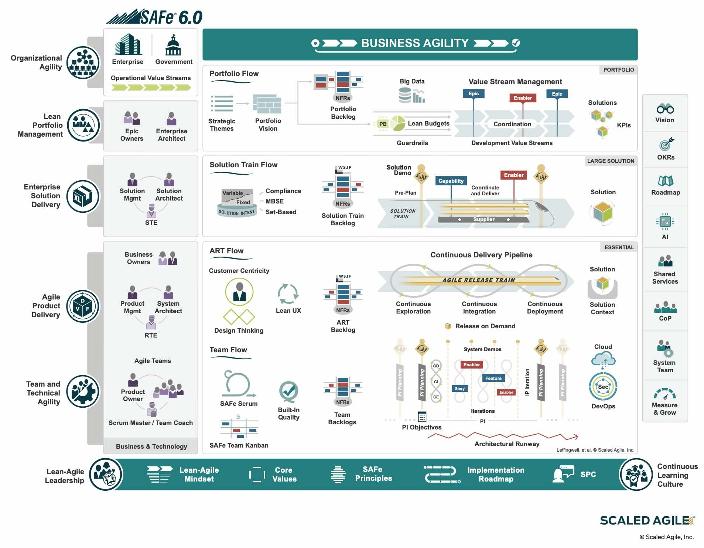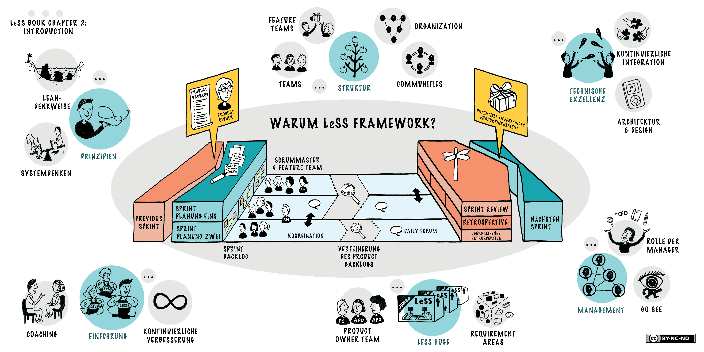Performance
Cross-team collaboration: a key to high performing organizations
Effective team collaboration not only boosts performance but also enhances customer satisfaction. Bottlenecks are minimized, innovation thrives, and customer needs are addressed more swiftly. Strong cross-functional teamwork enables organizations to respond flexibly to change while simultaneously improving product quality. With shared goals, clear communication, and increased transparency, everyone moves in sync, which consequently strengthens the entire organization.
Challenges of team coordination
Organizations lose efficiency due to high internal coordination efforts. Instead of setting up teams along the value chain in a multidisciplinary way, organizations often think and act in terms of coordination within existing functional structures. This leads to teams working in isolation and communicating inadequately with each other. In addition to many dependencies, this often results in products that reflect the internal structures more than the actual customer requirements. In addition, different working methods and priorities between teams can lead to conflicts. If these conflicts are extended to include individual target agreements, this can even lead to internal competition to the detriment of the customer. The pressure on the "weakest" team increases and there are additional waiting times in value creation - because the product is only as good as the weakest team. The result? Long lead times and dissatisfied customers.
Success criteria for cross-team collaboration
Efficient team coordination is crucial to the success of an organization. Here are six key success factors:
- Joint focus on the customer: Teams should always focus their work on the needs of the customer. This ensures that products and services are customer-centric and not shaped by internal structures.
- Minimizing dependencies through multidisciplinary teams: Teams that work along the entire value stream reduce dependencies and accelerate the workflow, as they are able to solve problems independently.
- Common working methods: Standardized processes and working rhythms - such as a common cadence and the early integration of results - promote collaboration and prevent delays.
- Transparency and clear communication: Systematic, clear communication and transparency in work processes help to avoid misunderstandings and enable effective collaboration.
- Continuous improvement of working methods: Through regular inspection and adaptation (I&A), processes are continuously optimized so that teams can react more efficiently and flexibly to changes.
These factors lead to greater delivery capability and a stronger focus on the customer, making companies both more efficient and more competitive.
Frameworks and methods for coordinating multiple teams
Various frameworks help teams to work together efficiently and improve delivery capability and customer centricity. Here is a comparison of three common approaches.

SAFe (Scaled Agile Framework)
SAFe offers a comprehensive approach to scaling agile principles. It is based on Lean-Agile practices that help coordinate value streams across different teams. SAFe enables companies to develop large and complex solutions by organizing agile teams into Agile Release Trains (ARTs) and promoting continuous delivery of solutions.

LeSS (Large Scale Scrum)
LeSS is a minimally structured framework that aims to scale agility by focusing on less hierarchy and direct communication between teams. It encourages the retention of Scrum principles, even in large organizations

Kanban
Kanban is not so much a framework as a flexible model for visualizing and managing work. It focuses on continuously optimizing work steps and eliminating bottlenecks without prescribing a fixed team structure or specific roles. This makes it particularly suitable for teams that want to gradually improve existing processes.
Our support in the development of collaboration models
At wibas, we support companies in introducing ways of working together in line with the criteria for success. Together with our clients, we reflect on models of how SAFe, LeSS or Kanban and adapt them to the context of the organization. In doing so, we supplement proven models with tested tools and practical knowledge from a wide range of industries. Our experience within different industries helps us to tailor the models to the client's needs in order to promote sustainable and efficient collaboration.
Contact us or make an appointment. We are Timo Foegen, Yvonne Fischer, Tina Eisoldt, Daniel Votta and Lutz Koch. We look forward to working with you.
High performing organizations
The ability to deliver and customer focus are crucial characteristics for the success of any company. When teams and departments work together reliably and effectively, products and services are delivered on time. Read here which building blocks are relevant for this.
Success Story: Introduction of SAFe at SMA - Agility in the energy sector
Read here about the successful introduction of SAFe at SMA.
SAFe trainings
Whether Leading SAFe 6.0 or Implementing SAFe 6.0: We offer the entire range of Scaled Agile Academy training courses.
When working harder is not the solution ...
In the modern business world, where speed and efficiency are critical, leaders are often looking for ways to push their teams to higher [...]
What is agile scaling?
Agile scaling means applying the principles and techniques of agility beyond the team level (e.g. to coordinate several teams).
Your contact person:
Mark Kepler
